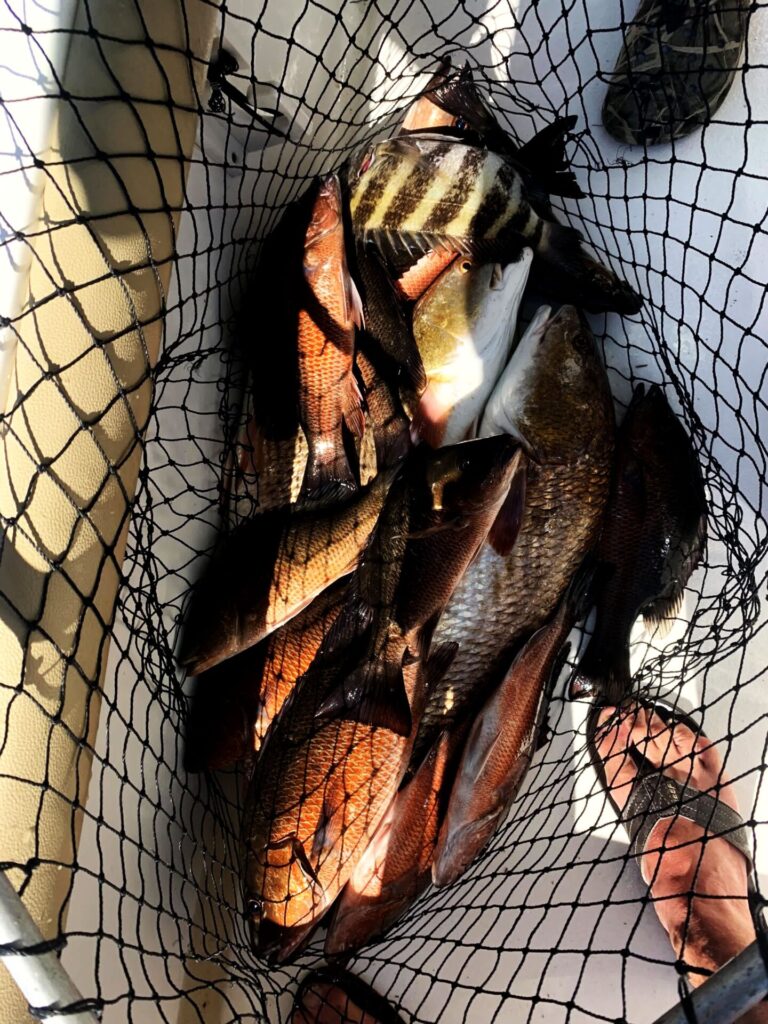Exploring Inshore and Deep-Sea Fishing on the East Coast: Cape Cod, Chesapeake Bay, Hilton Head, Tampa Bay, and Beyond

A Comprehensive Guide to Inshore and Deep-Sea Fishing in Nine Iconic East Coast Destinations
Hey, fishing fanatics! Whether you’re casting a line close to shore or venturing into the open ocean, the East Coast of the United States is a treasure trove of fishing opportunities. From the rugged shores of Cape Cod to the tropical waters of the Florida Keys, each destination offers a unique blend of inshore and deep-sea fishing experiences. In this guide, we’ll explore nine top spots—Cape Cod, Chesapeake Bay, Hilton Head, Tampa Bay, Outer Banks, Montauk, Florida Keys, Charleston, and Virginia Beach—diving into what makes each location special, when to fish, where to go, and what gear to use. Let’s reel in the details and help you plan your next fishing adventure!
Cape Cod, Massachusetts – The Striper Haven
Cape Cod’s iconic coastline, with its sandy beaches and rocky outcrops, is a pilgrimage site for anglers chasing striped bass, affectionately called stripers. Its inshore waters are legendary, and offshore trips yield big game.
- When to Fish: For inshore fishing, fall (September to early November) is prime time due to the striper migration, when cooler waters trigger feeding frenzies. Spring (May to June) is also productive. For deep-sea fishing, summer (July to August) is ideal for targeting bluefin tuna and sharks offshore.
- Where to Fish: Inshore, the Cape Cod Canal is a hotspot, especially during tidal shifts when stripers chase baitfish. Provincetown’s shores and Barnstable’s sandy flats are also excellent. Offshore, head to Stellwagen Bank, a marine sanctuary 25 miles out, for tuna, cod, and haddock.
- What to Use: Inshore, live eels or mackerel mimic natural prey, while topwater plugs and soft plastics work for stripers. For deep-sea, heavy trolling rods with wire lines and large lures like spreader bars attract tuna. Jigs and bait rigs are great for bottom fish like cod.
Cape Cod’s maritime charm, with quaint fishing villages and bustling harbors, adds to the experience. Inshore fishing requires timing the tides, while deep-sea trips demand sturdy gear and a good charter captain. Whether you’re battling a 40-pound striper or a 500-pound tuna, Cape Cod delivers.
Chesapeake Bay, Maryland/Virginia – The Rockfish Capital
The Chesapeake Bay, the largest estuary in the U.S., is a fishing mecca for inshore rockfish (striped bass) and offshore species like bluefin tuna. Its vast waters and diverse structure make it a year-round destination.
- When to Fish: Inshore, spring (April to May) and fall (October to November) are best for trophy rockfish, with early mornings or late evenings maximizing bites. Deep-sea fishing peaks in summer (June to August) for tuna and billfish in the Atlantic canyons.
- Where to Fish: Inshore, try the Bill Burton Fishing Pier, the Potomac River mouth, or Baltimore’s shoreline. Flats and drop-offs near Kent Island are productive. Offshore, the Norfolk and Baltimore Canyons, 60–80 miles out, are hotspots for marlin, tuna, and mahi-mahi.
- What to Use: For inshore rockfish, live spot or eels on light tackle work well; jigging with soft plastics near structures is effective. Offshore, trolling with skirted lures or chunking with cut bait targets pelagics. Heavy rods and braided line handle the big fighters.
The bay’s mix of urban and natural settings, from Annapolis’s historic docks to remote marshes, creates a unique vibe. Inshore fishing is accessible for beginners, while deep-sea charters cater to thrill-seekers chasing trophy fish.
Hilton Head, South Carolina – The Lowcountry Lure
Hilton Head’s tidal marshes, creeks, and serene beaches offer a laid-back inshore fishing experience, with offshore waters teeming with big game. It’s a Lowcountry gem for redfish and cobia enthusiasts.
- When to Fish: Inshore, spring (March to May) and fall (September to November) are peak for redfish and spotted sea trout. Deep-sea fishing shines in summer (June to August) for king mackerel and cobia near reefs.
- Where to Fish: Inshore, target Calibogue Sound’s creeks, oyster beds, and marsh grass lines. The lagoons and docks around Harbour Town are also productive. Offshore, head to the Port Royal Sound reefs or 30–50 miles out for wrecks and artificial reefs.
- What to Use: Inshore, live shrimp under a popping cork or soft plastics mimicking crabs draw redfish. For trout, try topwater lures at dawn. Offshore, live bait like menhaden or trolling with diving plugs targets kingfish and cobia.
Hilton Head’s tranquil marshes contrast with the adrenaline of offshore battles. Inshore fishing is perfect for families, while deep-sea trips offer a chance to hook into powerful fish against a backdrop of dolphins and sea turtles.
Tampa Bay, Florida – The Sunshine State’s Fish Bonanza
Tampa Bay’s warm, clear waters are a haven for inshore and offshore anglers, with a dizzying array of species from snook to sailfish. Its vibrant marine life makes it a year-round hotspot.
- When to Fish: Inshore, spring (March to May) and early summer (June to July) are ideal for snook, redfish, and tarpon. Deep-sea fishing peaks in spring and fall for grouper, snapper, and kingfish.
- Where to Fish: Inshore, explore mangrove shorelines near Weedon Island, the flats around Fort De Soto, or bridge pilings in the bay. Offshore, the Middle Grounds (80–100 miles out) or nearshore wrecks (10–30 miles) are prime for pelagics and bottom fish.
- What to Use: Inshore, live pilchards or shrimp on light tackle work for snook; topwater lures excel for tarpon. Offshore, heavy rods with live bait or jigs target grouper, while trolling with plugs catches kingfish.
Tampa’s bustling bay, framed by city skylines and mangroves, offers endless opportunities. Inshore fishing is accessible from kayaks or piers, while deep-sea charters provide high-octane action for seasoned anglers.
Outer Banks, North Carolina – The Surf and Gulf Stream Gem
The Outer Banks, a string of barrier islands, is renowned for its inshore red drum and world-class offshore fishing in the Gulf Stream. It’s a bucket-list destination for anglers of all levels.
- When to Fish: Inshore, fall (September to November) is prime for red drum and speckled trout; spring (April to May) is also strong. Deep-sea fishing peaks in summer (June to August) for tuna, wahoo, and billfish.
- Where to Fish: Inshore, Pamlico Sound’s grass flats and Hatteras Inlet are red drum havens. Surf fishing along Nags Head beaches yields stripers. Offshore, the Gulf Stream (30–50 miles out) near the Continental Shelf is a bluewater paradise.
- What to Use: Inshore, soft plastics or live mullet on Carolina rigs target red drum; popping corks with shrimp work for trout. Offshore, trolling with ballyhoo or skirted lures attracts marlin and tuna; chunking is effective for yellowfin.
The Outer Banks’ wild beaches and storied fishing culture, from Ocracoke’s quaint docks to Kitty Hawk’s historic piers, make every trip memorable. Inshore fishing is serene, while offshore battles are legendary.
Montauk, New York – The Northeast’s Fishing Capital
Montauk, at Long Island’s tip, is a fishing powerhouse, offering inshore stripers and fluke alongside offshore giants like tuna and sharks. It’s a must-visit for Northeast anglers.
- When to Fish: Inshore, late spring (May to June) and fall (September to October) are best for stripers and fluke. Deep-sea fishing peaks in summer (July to September) for tuna, shark, and mahi-mahi.
- Where to Fish: Inshore, Montauk Point’s rocky shores and Block Island Sound are striper magnets. Surf casting at Ditch Plains is popular. Offshore, the canyons (40–60 miles out) like Hudson and Block are tuna and billfish hotspots.
- What to Use: Inshore, bucktail jigs or live bunker target stripers; fluke rigs with squid strips work well. Offshore, trolling with spreader bars or chunking with butterfish draws tuna; shark rigs with chum are effective.
Montauk’s rugged beauty and bustling fishing harbor create an electric atmosphere. Inshore fishing is accessible from shore, while deep-sea charters offer heart-pounding battles with ocean giants.
Florida Keys, Florida – The Tropical Fishing Paradise
The Florida Keys, a coral island chain, offer world-class inshore fishing for bonefish and tarpon, plus deep-sea action for sailfish and mahi-mahi. It’s a tropical dream for anglers.
- When to Fish: Inshore, spring (March to June) is peak for tarpon and bonefish; fall (September to November) is great for permit. Deep-sea fishing shines in winter (December to February) for sailfish and summer for mahi-mahi.
- Where to Fish: Inshore, Islamorada’s flats and Key West’s backcountry channels are bonefish and tarpon havens. Offshore, the Marathon Hump or Key Largo’s deep wrecks (10–30 miles out) are pelagic hotspots.
- What to Use: Inshore, live crabs or shrimp for bonefish; fly fishing with streamers for tarpon. Offshore, trolling with ballyhoo or live bait targets sailfish; kites with live bait are deadly for pelagics.
The Keys’ turquoise waters and laid-back vibe make fishing here unforgettable. Inshore flats fishing is a finesse game, while offshore trips are high-energy hunts for trophy fish.
Charleston, South Carolina – The Historic Fishing Hub
Charleston blends Lowcountry charm with stellar inshore and offshore fishing. Its marshes teem with redfish, while offshore waters yield cobia and wahoo.
- When to Fish: Inshore, spring (March to May) and fall (September to November) are prime for redfish and trout. Deep-sea fishing peaks in summer (June to August) for cobia, amberjack, and wahoo.
- Where to Fish: Inshore, Wando River’s creeks and Shem Creek’s docks are redfish hotspots. Folly Beach’s surf yields trout. Offshore, reefs and wrecks 20–50 miles out near Edisto Banks are productive.
- What to Use: Inshore, live mud minnows or Gulp! baits on jigheads for redfish; topwater plugs for trout. Offshore, live menhaden or trolling with diving plugs targets cobia and wahoo.
Charleston’s historic charm and vibrant waterfront add depth to the fishing experience. Inshore trips are relaxing, while offshore charters offer thrilling battles with powerful fish.
Virginia Beach, Virginia – The Mid-Atlantic Fishing Powerhouse
Virginia Beach offers inshore flounder and cobia alongside offshore marlin and tuna. Its strategic location near the Chesapeake Bay and Atlantic makes it a versatile destination.
- When to Fish: Inshore, summer (June to August) is best for flounder and cobia; fall (September to October) yields stripers. Deep-sea fishing peaks in summer for white marlin and fall for tuna.
- Where to Fish: Inshore, the Chesapeake Bay Bridge-Tunnel is a cobia and flounder magnet. Lynnhaven Inlet’s flats are great for stripers. Offshore, the Norfolk Canyon (50–70 miles out) is a billfish and tuna haven.
- What to Use: Inshore, live minnows or bucktail jigs for flounder; live eels for cobia. Offshore, trolling with ballyhoo or spreader bars targets marlin; chunking works for tuna.
Virginia Beach’s lively boardwalk and rich fishing heritage make it a family-friendly yet hardcore fishing destination. Inshore fishing is accessible, while offshore trips are epic adventures.
Comparing the Catch
Each destination offers a distinct fishing profile, blending inshore and deep-sea opportunities:
- Species: Cape Cod is striper central, with offshore tuna and cod. Chesapeake Bay excels for rockfish, bluefish, and offshore marlin. Hilton Head’s redfish and trout shine inshore, with cobia offshore. Tampa Bay’s snook, tarpon, and grouper cover both zones. Outer Banks boasts red drum inshore and tuna offshore. Montauk offers stripers and fluke inshore, with shark and tuna offshore. The Florida Keys deliver bonefish and sailfish. Charleston’s redfish and wahoo are highlights. Virginia Beach provides flounder inshore and marlin offshore.
- Techniques: Inshore, Cape Cod and Montauk require drifting live baits or casting plugs. Chesapeake and Virginia Beach favor jigging or trolling. Hilton Head and Charleston involve sight casting in marshes. Tampa and the Keys demand finesse for tarpon and bonefish. Outer Banks excels in surf casting. Offshore, trolling dominates for pelagics, with chunking or kite fishing in the Keys and Chesapeake.
- Experience: Cape Cod’s New England charm, Chesapeake’s vast estuary, Hilton Head’s serene marshes, Tampa’s vibrant bay, Outer Banks’ wild dunes, Montauk’s rugged cliffs, the Keys’ tropical vibe, Charleston’s historic allure, and Virginia Beach’s lively coast each offer a unique backdrop. Inshore trips are intimate, while deep-sea adventures are exhilarating.
Conclusion
From the chilly, striper-filled waters of Cape Cod to the tropical flats of the Florida Keys, the East Coast’s nine premier fishing destinations offer something for every angler. Inshore fishing provides accessibility and serenity, with species like redfish, snook, and bonefish testing your skills in shallow waters. Deep-sea fishing delivers adrenaline, with tuna, marlin, and sailfish lurking in the open ocean. Success lies in understanding each location’s tides, seasons, and ecosystems—whether you’re casting into Montauk’s surf, trolling Chesapeake’s canyons, or sight fishing in Hilton Head’s marshes. Respect the environment, pack the right gear, and embrace the patience of waiting for that perfect bite. Choose your spot, chase your trophy, and let the East Coast’s waters fill your cooler and your stories. Tight lines and happy fishing!
Continue Reading Our Blog
It’s Not Just About the Fish: The Soul of Inshore Fishing
It’s Not Just About the Fish: The Soul of Inshore Fishing A Journey Beyond the…
East Coast Inshore Fishing: Cape Cod, Chesapeake Bay, Hilton Head, And the Tampa Bay
Exploring Inshore and Deep-Sea Fishing on the East Coast: Cape Cod, Chesapeake Bay, Hilton Head,…
The Impact Of Tides On Inshore Fishing
The Impact Of Tides On Inshore Fishing Tampa Bay’s inshore waters are a dynamic environment…




